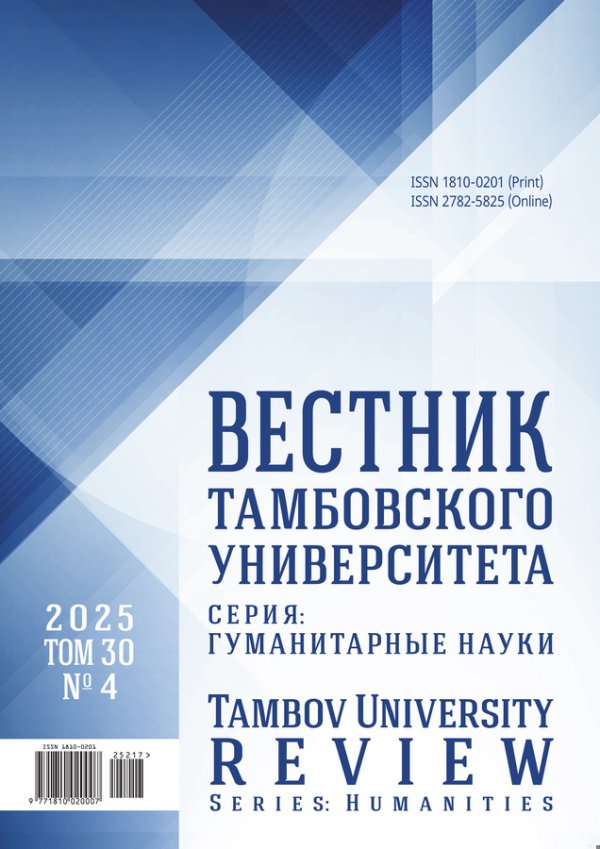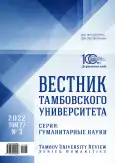Лингводидактический потенциал онлайн-обучения в современном образовании
- Авторы: Козлова М.С.1
-
Учреждения:
- ФГБОУ ВО «Липецкий государственный педагогический университет им. П.П. Семенова-Тян-Шанского»
- Выпуск: Том 27, № 3 (2022)
- Страницы: 688-696
- Раздел: ТЕОРИЯ И МЕТОДИКА ОБУЧЕНИЯ ИНОСТРАННОМУ ЯЗЫКУ
- URL: https://ogarev-online.ru/1810-0201/article/view/298245
- DOI: https://doi.org/10.20310/1810-0201-2022-27-3-688-696
- ID: 298245
Цитировать
Полный текст
Аннотация
Рассмотрена необходимость использования информационных технологий при обучении иностранному языку. Пояснено, почему специалисту в сфере образования важно ориентироваться в интернет-пространстве. Раскрыты основные отличительные особенности мультимедийной интерактивной компьютерной среды, возможности современных компьютерных и коммуникационных технологий, критерии, характерные для компьютерной среды, возможности интернет-пространства в образовании. Выделены такие дидактические свойства информационно-коммуникационных технологий, как: а) многоязычие и поликультурность информационных интернет-ресурсов; б) многоуровневость информационных интернет-ресурсов; в) разнообразие функциональных типов интернет-ресурсов; г) мультимедийность ресурсов; д) гипертекстовая структура документов; е) возможность создания личной зоны пользователя; ж) возможность организации синхронного и асинхронного общения; з) возможность автоматизации процессов информационно-методического обеспечения и организации управления учебной деятельностью обучающихся и ее контроль. Данные функции позволят значительно обогатить языковую и культурную практику обучающихся, а также создадут условия для развития умений самостоятельной учебной деятельности обучающихся, реализации педагогической технологии обучения в сотрудничестве, разработки индивидуальной образовательной траектории. Рассмотрены два основных подхода при онлайн-обучении (синхронный и асинхронный) и их основные преимущества и недостатки. Приведены примеры, как можно использовать онлайн-ресурсы при обучении, что способствует увеличению уровня мотивации у детей и значительно помогает педагогу при подготовке к учебным занятиям.
Об авторах
М. С. Козлова
ФГБОУ ВО «Липецкий государственный педагогический университет им. П.П. Семенова-Тян-Шанского»
Автор, ответственный за переписку.
Email: maria.milyakova@yandex.ru
ORCID iD: 0000-0002-4457-1089
преподаватель кафедры английского языка
398020, Российская Федерация, г. Липецк, ул. Ленина, 42Список литературы
- Смирнова Е.В. Формирование и использование программно-методического обеспечения, реализующего возможности информационных технологий, для развития умений иноязычной деятельности: на примере обучения английскому языку студентов неязыковых специальностей: дис. ... канд. пед. наук. М.: ИИО РАО, 2007. 154 с.
- Котова И.Ю. Рациональные и эмоциональные средства выражения самопрезентации в текстах англоязычных резюме // Иностранные языки и современные тенденции в иноязычном образовании: материалы 5 Юбилейной междунар. науч.-практ. конф. Воронеж: ВГУ, 2021. С. 42-48.
- Ветчинин Н.М. Тренды университетской цифровизации: от простого к сложному // Ноосферные исследования. 2021. № 1. С. 106-114. https://doi.org/10.46724/NOOS.2021.1.106-114
- Капранчикова К.В. Дидактические свойства и методические функции мобильных технологий в обучении иностранному языку // Вестник Тамбовского университета. Серия: Гуманитарные науки. 2014. Вып. 1 (29). С. 49-56.
- Сысоев П.В. Дидактические свойства и функции современных информационных и коммуникационных технологий // Иностранные языки в школе. 2012. № 6. С. 120-134.
- Сафонова В.В. Культуроведение в системе современного языкового образования // Иностранные языки в школе. 2001. № 3. C. 17-24.
- Сысоев П.В. Языковое поликультурное образование: теория и практика. М.: Еврошкола, 2003.
- Савкина Е.А. Параметры социокультурной компетенции участника межкультурной коммуникации // Общество. Коммуникация. Образование. 2020. Т. 11. № 3. С. 108-120. https://doi.org/10.18721/JHSS.11309
- Сысоев П.В., Евстигнеев М.Н. Современные учебные интернет-ресурсы в обучении иностранному языку // Иностранные языки в школе. 2008. № 6. С. 100-110.
- Шкильменская Н.А. Основные функции современных информационно-коммуникационных технологий в условиях гуманитаризации образования // Известия Российского государственного педагогического университета им. А.И. Герцена. 2009. № 83. С. 58-68.
- Соловов А.В. Электронное обучение – новая технология или новая парадигма? // Высшее образование в России. 2006. № 11. С. 104-112.
- Соловов А.В. Информационные технологии обучения в профессиональной подготовке // Высшее образование в России. 1995. № 2. С. 31-35.
- Соловов А.В. Дистанционное обучение: технологии и целевые группы // Высшее образование в России. 2006. № 7. С. 119-124.
- Бердичевский А.Л., Гиниатуллин И.А., Тарева Е.Г. Методика межкультурного иноязычного образования в вузе. М.: ФЛИНТА, 2020. 368 c.
- Okaz A.A. Integrating blended learning in higher education // Procedia – Social and Behavioral Sciences. 2015. Vol. 186. P. 600-603. https://doi.org/10.1016/j.sbspro.2015.04.086
- Красильникова В.А. Информационные и коммуникационные технологии в образовании. М.: Дом Педагогики, 2006. 231 с.
Дополнительные файлы










